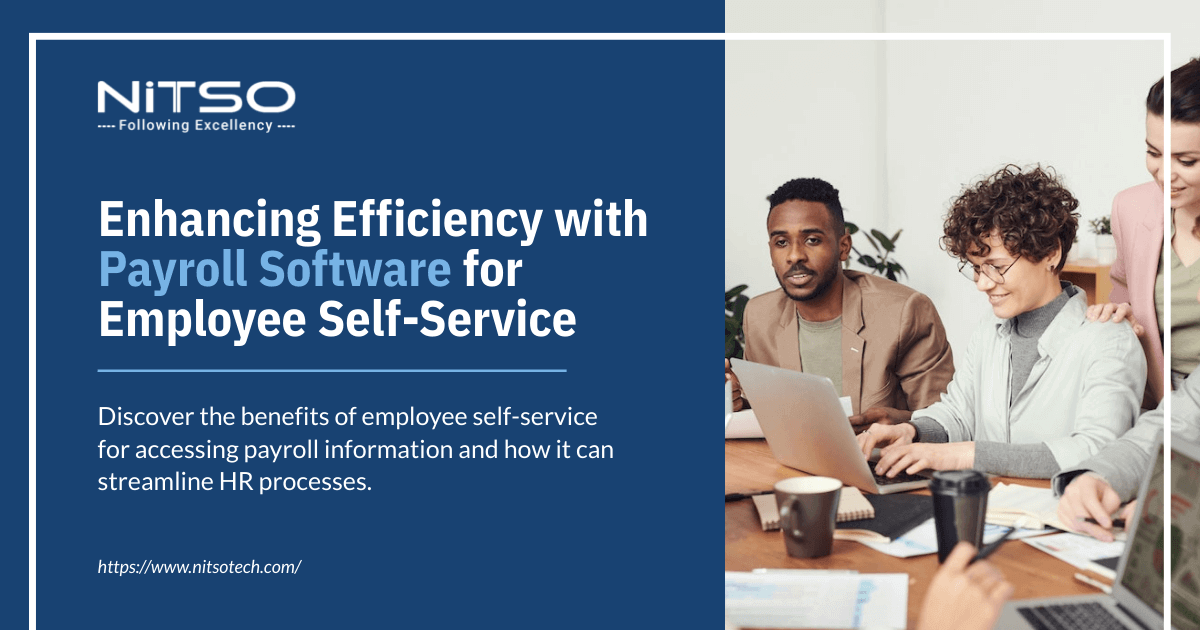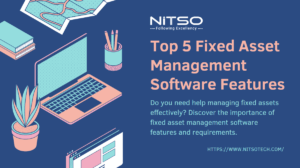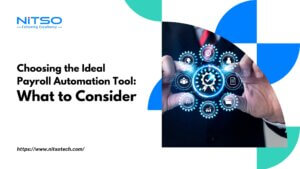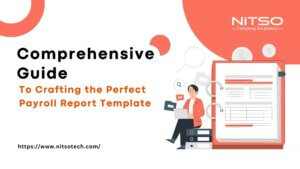In any organization, handling payroll is essential. This includes various tasks like computing employee salaries as well as withholding taxes and other deductions. Although this process may be time-consuming and prone to errors when done manually, many organizations have started using payroll software solutions to simplify the task.
When it comes down to using payroll software tools for workplace management purposes, several benefits come into play- one being enhanced efficiency rates at workstations alongside accurate record-keeping systems coupled with lower operational costs. However, what stands out more when considering adopting these systems into office routines is their ability to aid employee self-service channels fully.
Table of Contents
What is Employee Self-Service?
As we delve deeper into outlining various advantages offered by these computerized programs in enabling worker interaction with essential documents such as pay slips & taxation files later on in this article, let’s first define briefly what “employee self-service” means.
With this advanced system, employees are given the opportunity to take ownership of their work data by accessing various functionalities such as viewing payment records, updating personal details, and benefiting from a range of employee perks.
Benefits of Payroll Software for Employee Self-Service
Payroll processing used to be an inefficient process involving reams of paper and lots of manual work on the part of HR. With the advent of modern technology and payroll software systems that support employee self-service initiatives, payroll processing has become much more streamlined. Some of the Payroll Software benefits for Employee Self Service (ESS) include the following:
Improved Accuracy and Efficiency
For those tasked with processing payroll, the implementation of a reliable software program can decrease the potential for errors while simultaneously increasing efficiency. With these benefits, employees will experience quicker and more precise payments.
Enhanced Security
Sensitive employee information, such as PAN numbers and compensation data, can be kept secure with the use of advanced payroll software. A centralized and secure database ensures confidential data remains locked away from those who should not have access to it. In this sense, companies are able to improve their cybersecurity standards by protecting themselves from potential breaches or hacks.
Accessibility and Convenience
With payroll software, employees can access their payroll information anywhere and anytime. This accessibility and convenience mean that employees no longer need to request their pay stubs or tax documents from HR, reducing the workload on HR professionals.
Time Savings
Payroll software can save time for both employees and HR professionals. With self-service options available, employees can access their payroll information themselves, reducing the need for HR to respond to inquiries and requests.
Greater Transparency
The provision of payroll software has ushered in a new era of transparency in the realm of employee pay. It allows workers to view an itemized breakdown outlining how their compensation is calculated, inclusive of taxes, deductions, and benefits. This crucial measure delivers employees greater understanding when it comes to their paychecks and any variations that arise.
How Payroll Software Supports Employee Self-Service?
Payroll software has facilitated a paradigm shift in how employee self-service is managed across organizations. As technology continues to advance, so too do our expectations around convenience, flexibility, and speed. With this Payroll software, employees can take charge of their own information inputting, management issues, and making changes if required directly via digital channels. Here is how Payroll Software supports Employees:
Accessing Pay Stubs
Payroll software for employee self-service is designed to offer various functionalities, including accessing pay slips. This feature allows employees to understand their paychecks better and obtain a print of them whenever required. Through this convenient service, HR professionals’ workload is reduced by enabling employees to access their information independently.
Viewing Tax Documents
Embedded within payroll software is an employee self-service feature that grants access to tax documents, comprehension of which is crucial for any working individual. The viewing and downloading of Form-16, Form 26, as well as other tax-related documents, are available through the self-service portal provided by the payroll software. Such a trait proves more practical during tax season when employees can access these aforementioned documents without HR intervention.
Requesting Time Off
Payroll software applications allow staff members to quickly request much-needed days off without any additional fuss or hassle. This convenient feature offers numerous benefits, such as reducing burdensome administrative duties usually assigned to HR professionals and affording more independence to each employee when arranging their schedule by submitting time-off requests right from the comfort of their workstation.
Updating Personal Information
Incorporating payroll software into a company’s HR management system presents employees with a convenient self-service portal for updating personal information. This includes altering details such as addresses, phone numbers, and emergency contact numbers. By providing this option, HR professionals can save valuable time that would typically be spent manually processing these updates.
Accessing Benefits Information
The modern age is all about instant gratification coupled with convenience – be it buying products online or simply paying your bills on your phone. When it comes to checking paychecks or taxes at work, similarly easy options now exist through a company’s self-service portal, which offers a variety of services from just viewing these basic payment-related documents up to particular employee benefits like health coverage policies, savings schemes, pension details, etc., accessible within a single click – thereby reducing paperwork for personnel better deployed elsewhere.
Customizing Payroll Software for Employee Self-Service
Customizing payroll software with employee self-service in mind requires careful consideration of an organization’s unique needs. By selecting the appropriate software package and modifying features to align with specific objectives, companies can reap substantial benefits from this revolutionary technology. For example, implementing user-friendly interfaces and automating routine tasks such as timekeeping and attendance monitoring while also guaranteeing proper data protection are all key factors that should be taken into account.
Choosing the Right Features
When selecting a payroll software solution, choosing one that includes the features necessary for employee self-service is important. These features may include viewing pay stubs, accessing tax documents, requesting time off, and updating personal information.
Customizing the User Interface
In order to meet the unique needs of an organization, the self-service portal’s user interface can be customized. Companies have the option to make alterations such as adding their logo to enhance brand recognition, altering the color scheme for aesthetic value, or rearranging the portal layout according to their preference.
Integrating with Other HR Systems
The implementation of integrated payroll software has proven to provide a more fluid experience for employees within organizations today. Its combination with other HR systems, such as time and attendance tracking, creates a streamlined process by which duplication is greatly reduced, leading to significant savings in operating costs associated with labour inefficiencies.
Overcoming Challenges in Implementing
Organizations wishing to move towards a more technologically advanced solution for employee payroll and self-service will likely encounter some difficulties during implementation. For instance, they may find themselves having trouble reaching certain groups of employees with access to the new system; communication problems between departments or different teams can arise as well. Additionally, there may be technical challenges related to integration or compatibility that must be addressed before full adoption can begin. Some of the challenges in implementing Payroll Software for Employee Self-Service include:
Resistance to Change
When confronted with new technology, employees may object due to their familiarity with a paper-based system. To alleviate this issue, businesses can offer coaching and assistance to personnel in order to increase their confidence using the new platform.
Technical Challenges
The implementation of new payroll software may give rise to technical obstacles. One such challenge includes compatibility issues with preexisting systems and data migration. To minimize any potential hitches, a well-structured plan must be put in place before installation.
Employee Training and Education
Ensuring that employees are able to navigate and operate the self-service portal correctly involves providing them with adequate education and training regarding its functions. By providing extensive instruction as well as continual support, workers will be able to use this new system with greater confidence and fewer errors.
Conclusion
Providing opportunities for employee self-service is critical in today’s fast-paced work environment. One way organizations are achieving this goal is by adopting advanced payroll software in Delhi capable of delivering a range of valuable functions directly to workers. With the right system in place, employees can easily view their pay stubs as well as check income taxes withheld and plan future expenses accordingly. They also have instant access to relevant benefits data and can make time-off requests or update contract details with just a few clicks! To maximize the usefulness of this technology implementation, consider customizing your current system according to unique business needs while ensuring seamless integration with other departments within Human Resources.
While implementing payroll software for employee self-service may present some challenges, such as resistance to change and technical issues, providing training and support to employees and having the plan to address potential challenges can ensure a successful implementation process.
The implementation of payroll software for employee self-service is a great way to reduce the workload on HR professionals while also providing workers more control over their payroll information. Through careful selection and customization of the software package, companies can optimize their HR practices while enhancing overall productivity.
Frequently Asked Questions (FAQs)
How does employee self-service improve the accuracy of payroll data?
Allowing employees to enter and update their personal information, such as their address and tax withholding information, significantly reduces the chances of errors or discrepancies in payroll data.
Is it possible to customize payroll software according to the requirements of an organization?
Yes, payroll software can be customized to meet an organization’s unique needs, such as integrating with other HR systems or adding additional features for employee self-service.
What types of information can employees access through self-service payroll software?
Pay stubs, tax documents, and benefits information are some of the resources that employees can obtain by simply logging into their company website. They also have access to various personal files like their accurate mailing address and other contact-related pieces of data.
How does employee self-service through payroll software benefit HR professionals?
By allowing employees to access and update their information, HR professionals are freed from routine administrative tasks, allowing them to focus on more strategic initiatives.
Can payroll software be integrated with other HR systems?
Yes, payroll software can be integrated with other HR systems, such as time and attendance tracking or performance management systems.
How can employee self-service through payroll software improve employee satisfaction?
Giving employees more control over their payroll and benefits information makes them feel empowered and valued, leading to increased job satisfaction and engagement.
What types of technical support are typically provided with payroll software?
Most payroll software providers offer technical support, including online help centers, phone support, and chat support, to assist with any technical issues.
How can organizations overcome resistance to implementing employee self-service through payroll software?
Providing employee training and support, communicating the benefits of employee self-service, and involving employees in the implementation process can help overcome resistance.
How does employee self-service through payroll software improve compliance with labour laws and regulations?
By providing employees access to their payroll and benefits information, organizations can ensure compliance with labour laws and regulations related to record-keeping and employee rights.
Can payroll software be used to automate payroll processes?
Yes, payroll software can automate many routine payroll processes, such as calculating employee pay, withholding taxes, and generating pay stubs and tax documents.








0 Comments